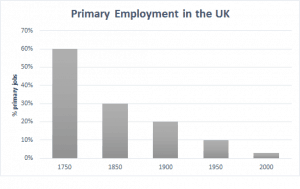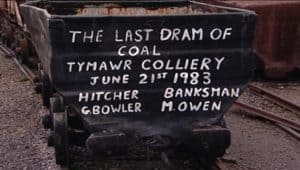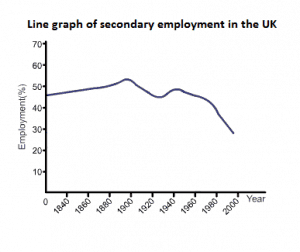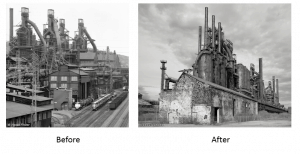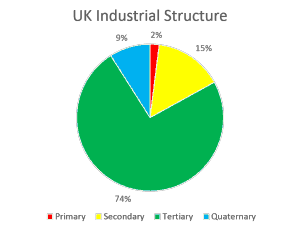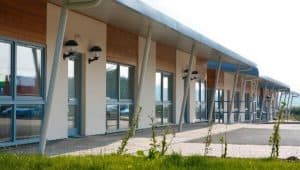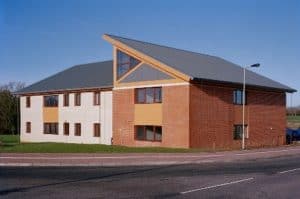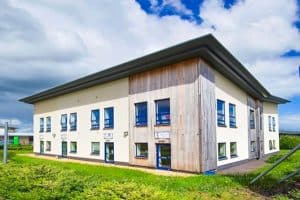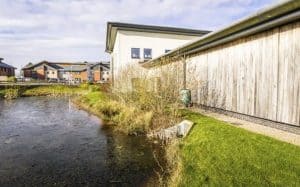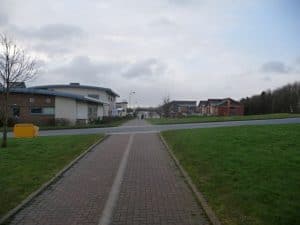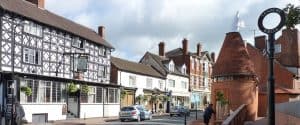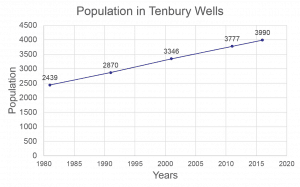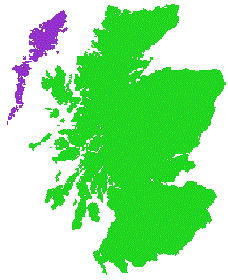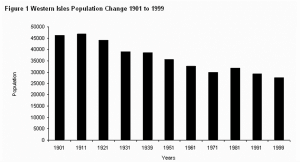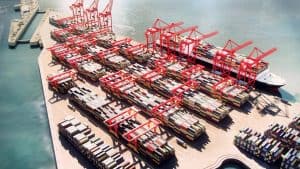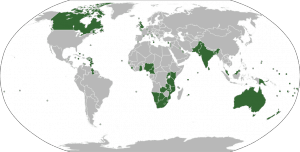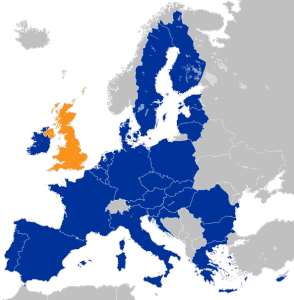The economy of the UK has changed. The % of people employed in the primary sector has declined. Primary jobs involve extracting raw materials. Examples are farmers, miners and fishermen.
The reasons for the decline in primary industry are:
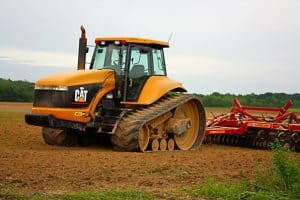 The increased use of machinery on farms which means fewer farm workers are needed.
The increased use of machinery on farms which means fewer farm workers are needed.
More food is imported so we need fewer 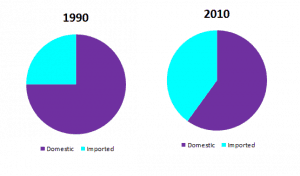 farmers to grow food in the UK.
farmers to grow food in the UK.
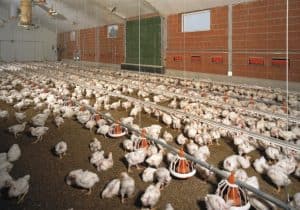 The rise in intensive farming in which one farmer can look after large numbers of animals e.g chickens.
The rise in intensive farming in which one farmer can look after large numbers of animals e.g chickens.
The increased size of fishing boats means a few fishermen 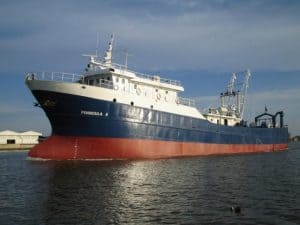 can catch large numbers of fish.
can catch large numbers of fish.
 The decline in fish stocks in the sea so fewer fishermen are needed to catch the few fish remaining.
The decline in fish stocks in the sea so fewer fishermen are needed to catch the few fish remaining.
Larger machines in mines means that fewer miners are needed.
Many UK mines have run out of coal to extract.
More and more coal is imported because it is cheaper so fewer UK 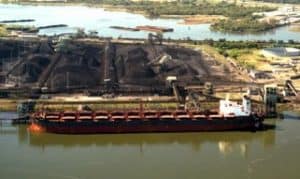 miners are required.
miners are required.
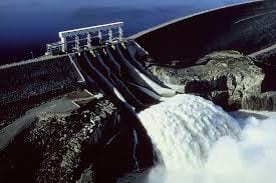 In the UK we are switching to renewable power, like HEP, to reduce carbon emissions. This means less coal is burnt so fewer miners are needed.
In the UK we are switching to renewable power, like HEP, to reduce carbon emissions. This means less coal is burnt so fewer miners are needed.
The percentage of people in the UK who work in secondary industry has also dropped. Many traditional industries have declined, such as steel making, ship building and textiles.
Traditional industries such as steel making have declined due to de-industrialisation. Production of steel has moved to other countries, especially NEEs (Newly Emerging Economies). This is because of high labour costs in HICs, like the UK, which means that imported steel is cheaper. Many secondary industries have declined because primary industries have exhausted their supplies of raw materials. Many UK coal and iron ore mines have run out of raw materials so many UK steel works have closed too.
Traditional industries such as textiles have also declined in the UK due to globalisation. This is when imports replace domestically produced products. It is cheaper to import clothes form Asia, where the cost of production is much lower than the UK. Many of our clothes and shoes are now made in NEEs such as China, Vietnam, Bangladesh, Pakistan, Sri Lanka etc. The growth of trans-national companies (TNCs) means factories can be moved around the world because companies operate in many countries. Improvments in trade mean that goods can easily be transported around the world in huge container ships.
Traditional industries have also declined due to automation. Car factories now use robots and machines. This means that fewer factory workers are needed. Therefore the secondary sector has declined in the UK from 50% in 1900 to 15% today.
The UK’s industrial structure today
The UK has a post-industrial economy.
Primary employment is low at 2%.
Secondary employment is declining; currently 15%.
Tertiary and especially quaternary employment are growing with 74% and 9% of all jobs respectively.
An example of the growing tertiary and quarternary sector are UK science and research parks.
An example of a modern industrial development that is been built to be environmentally sustainable.
 Ludlow Eco Park is situated just to the east of Ludlow, next to the A49. It has been built on a greenfield site on the rural urban fringe.
Ludlow Eco Park is situated just to the east of Ludlow, next to the A49. It has been built on a greenfield site on the rural urban fringe.
It is a 6.6 hectare business park with tenants including medical companies, accountants, solicitors, software companies, laboratory equipment supplies, vets and dentists.
Buildings have deep overhangs to shade in summer and reduce the need for air conditioning.
Buildings have photovoltaic panels, which generate electricity and high levels of insulation – 25% better than building regulations demand.
Builings have south facing windows to reduce the need for artificial light. Buildings are constructed to reduce greenhouse gas emissions by 50%.
Rain water harvesting has been used to reduce water consumption by using collected water for use in flushing toilets.
Cycle stores and cycle routes have been used to promote cycling rather than driving to work.
There is a bus service and park and ride scheme to encourage use of public transport.
Changes in a rural area with a growing population
Tenbury Wells, Worcestershire is a rural area with a growing population.
In 1981 2439 people lived in Tenbury Wells according to the census. By 2011 that had increased to 3777. It is estimated that in 2017 the population was 3990. This growth in Tenbury’s population has been caused by counter-urbanisation. This is when people move from urban areas to rural areas. In Tenbury’s case many people have moved here from urban areas in the West Midlands e.g. Birmingham, Worcester etc. They move due to push factors from built up areas e.g crime, traffic, high house prices etc and pull factors for the countryside e.g views and open space and homes with bigger gardens etc.
The impact of counter-urbanisation on Tenbury are clasified in the table below. They can be grouped into economic impacts, social impacts and environmental impacts.
| Positive | Negative |
| Some local services may have more customers such as public houses or local tradesmen (for example, builders).
House prices in rural areas may rise as demand increases. Old derelict farm buildings are turned into new homes – improving the appearance of the area. New families moving in mean local schools may have an increase in pupils and are able to stay open. Increased trade for local shops and suppliers and therefore benefits are felt throughout the local economy. Investment in improved services – e.g. new health centre – only possible given an increased population. |
Many of the new people still work in urban areas so long journeys to work can cause more congestion and pollution.
Lots of retired people moving to an area may mean fewer services for young people. There can be conflict between local residents and the ‘newcomers’ to the area, e.g. farm smells or mud on the road. Many of the new people do not support local businesses and do their shopping in the urban areas where they work. Rural villages are deserted during the day since everyone is at work – loss of community spirit. Local people cannot afford to buy a house and have to move away from their local town/village. |
Changes in a rural area with a declining population
The Western Isles are a group of islands in the north-west of Scotland.
Remember how to describe a pattern on a graph. Start with general pattern – increase or decrease. Quote data from y axis. Spot any anomalies in the graph. Comment on changes in rate of growth or decline. Don’t use because.
The population of the Western Isles has declined from 46 000 in 1901 to 28 000 in 1999. There are anomalies in 1911 and 1981 where the population grew slightly compared to the general pattern of a steady decrease.
The decline in rural population is called depopulation. In the case of the Western Isles many people have left (known as push factors) because of slow transport by ferry, lack of jobs, little opportunity for higher education. The pull factors attracting people to mainland Scotland are education, jobs and improved social life.
The impact of depopulation on the Western Isles are clasified in the table below. They can be grouped into economic impacts, social impacts and environmental impacts.
| Positive Effects | Negative Effects | |
| Social | . | Population falls by 50% in a century. Unemployment rises. Fewer young people. 11 local schools shut – one only has 7 pupils. Less frequent ferry service to and from the island. Families split up as young people leave. Remaining population becomes older. |
| Economic | Fewer customers for local shops and services. Businesses close. House prices and rents decline. |
|
| Environmental | Less traffic and pollution Less disturbance of nesting birds e.g. white tailed eagle. |
Abandoned homes, buildings, farms or crofts.
|
The north south divide
The north south divide is a line which separates the UK into two halves.
In the south people earn more and there is less unemployment. People enjoy better health and have a longer life expectancy. Pupils leave school with better GCSEs and are more likely to gain higher qualifications.
In the north people earn £11 000 less per year and there is more unemployment. People are more likely to have health problems like heart disease and have 3 years less life expectancy on average. Pupils are less likely to leave school with 5 good GCSEs and attend university.
| North | South | |
| Unemployment rate | 6% | 3.4% |
| Life expectancy | 79 years | 82 years |
| Average income | £24 000 | £35 000 |
| Admissions to Oxford and Cambridge University per year | 800 | 2700 |
| Pupils gaining 5 GCSEs at grade 4 or better | 55% | 59% |
| Average house price | £162 000 | £302 000 |
| Cases of heart disease per 100 000 people | 244 | 156 |
| Economic growth rate | 1.6% | 3% |
Strategies to reduce the north-south divide
High Speed Rail (HS2)
 A new high-speed railway line (called HS2) is being built between London and cities in northern England. Trains will travel at 250mph. HS2 will make Manchester, Sheffield and Leeds more attractive for business.
A new high-speed railway line (called HS2) is being built between London and cities in northern England. Trains will travel at 250mph. HS2 will make Manchester, Sheffield and Leeds more attractive for business.
Media City, Salford
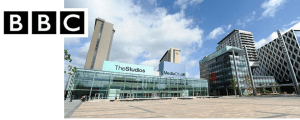 The government has moved jobs from the south to the north. An example of this is the BBC. They have moved 2700 jobs from London to Media City in Salford, Manchester. This creates well-paid high-skilled jobs in the north.
The government has moved jobs from the south to the north. An example of this is the BBC. They have moved 2700 jobs from London to Media City in Salford, Manchester. This creates well-paid high-skilled jobs in the north.
Newcastle Science Central
 Science Central is a 24 acre development in Newcastle, northern England. It is linked to Newcastle University and contains research laboratories. It is hoped that other scientific companies will move here.
Science Central is a 24 acre development in Newcastle, northern England. It is linked to Newcastle University and contains research laboratories. It is hoped that other scientific companies will move here.
Northern Powerhouse
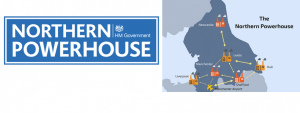 The Northern Powerhouse is a plan to boost the northern economy by investing in education and skills and spending £13 billion on transport. There are also lots of new powers given to the elected mayors of northern cities.
The Northern Powerhouse is a plan to boost the northern economy by investing in education and skills and spending £13 billion on transport. There are also lots of new powers given to the elected mayors of northern cities.
Manchester Airport expansion
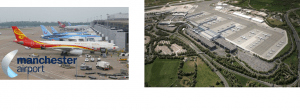 Manchester Airport is being expanded in £1 billion plan to add a new terminal. Extra capacity means Manchester Airport can offer more flights to Europe. This will attract more businesses to north west England.
Manchester Airport is being expanded in £1 billion plan to add a new terminal. Extra capacity means Manchester Airport can offer more flights to Europe. This will attract more businesses to north west England.
Liverpool2
Liverpool2 is a new deep-water container port in Liverpool which opened in 2016. It cost £400 million and will create 5000 jobs loading and unloading containers from some of the biggest ships in the world.
UK transport infrastructure improvements
The UK’s links to the world
- The Commonwealth is a group of 52 countries that were formerly colonies of the British Empire.
- Most are now independent but some still have the Queen as their Head of State.
- In many Commonwealth countries English is an official language and they have similar governments to ours.
- Citizens of Commonwealth countries have close cultural ties to the UK – including family.
- Trade with the Commonwealth makes up 9% of UK exports.
- Examples of Commonwealth countries include Canada, New Zealand, South Africa and India.
- The European Union is an organisation of countries set up after WW2 to promote peace and trade across the continent.
- Member countries can trade without barriers or taxes and their citizens can travel freely.
- About 3.7 million EU citizens live in the UK. 1.2 million UK citizens live in another EU country.
- The UK joined in 1973. We voted to leave in 2016.
- Trade with the EU makes up 44% of UK exports.
- Examples of EU countries include Germany, France, Italy and Spain.
